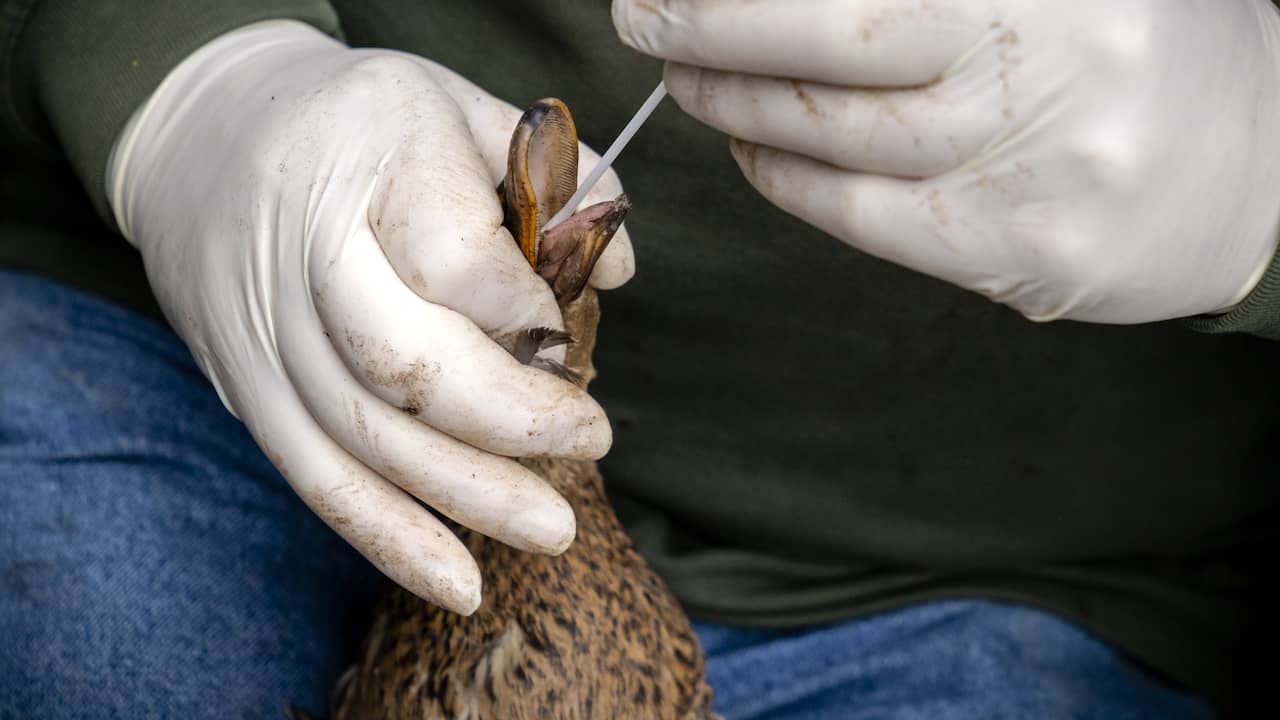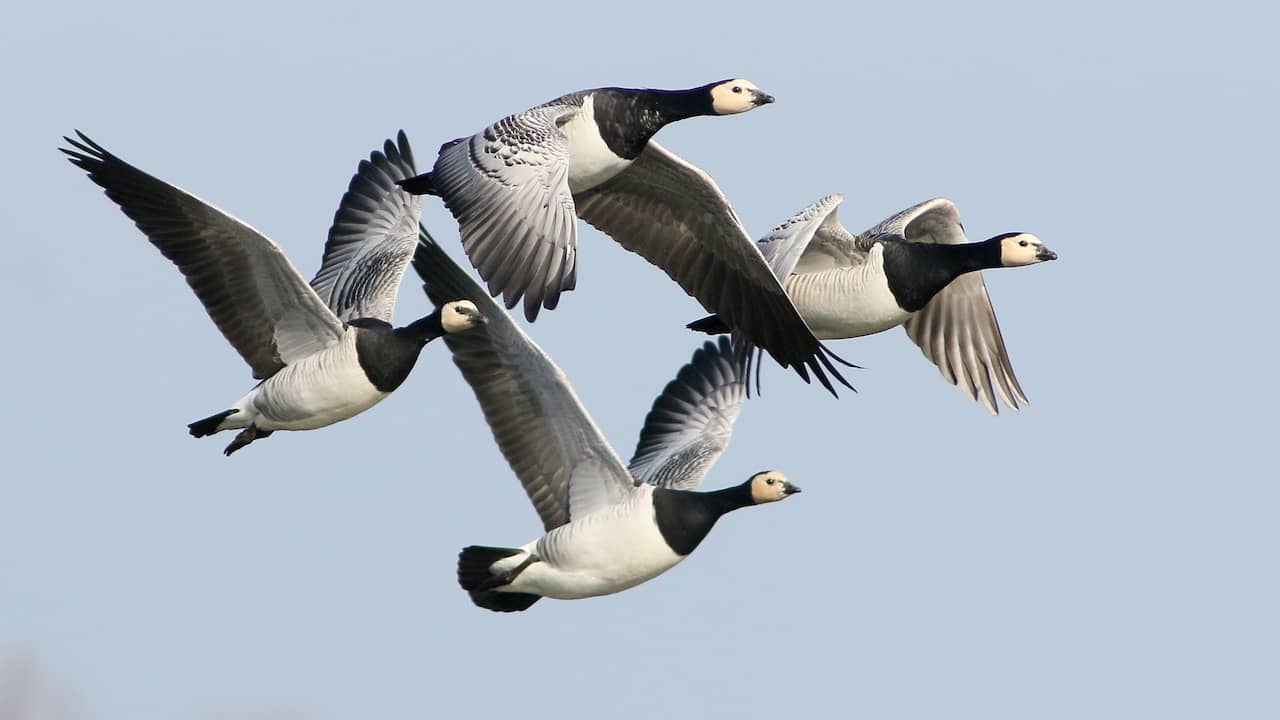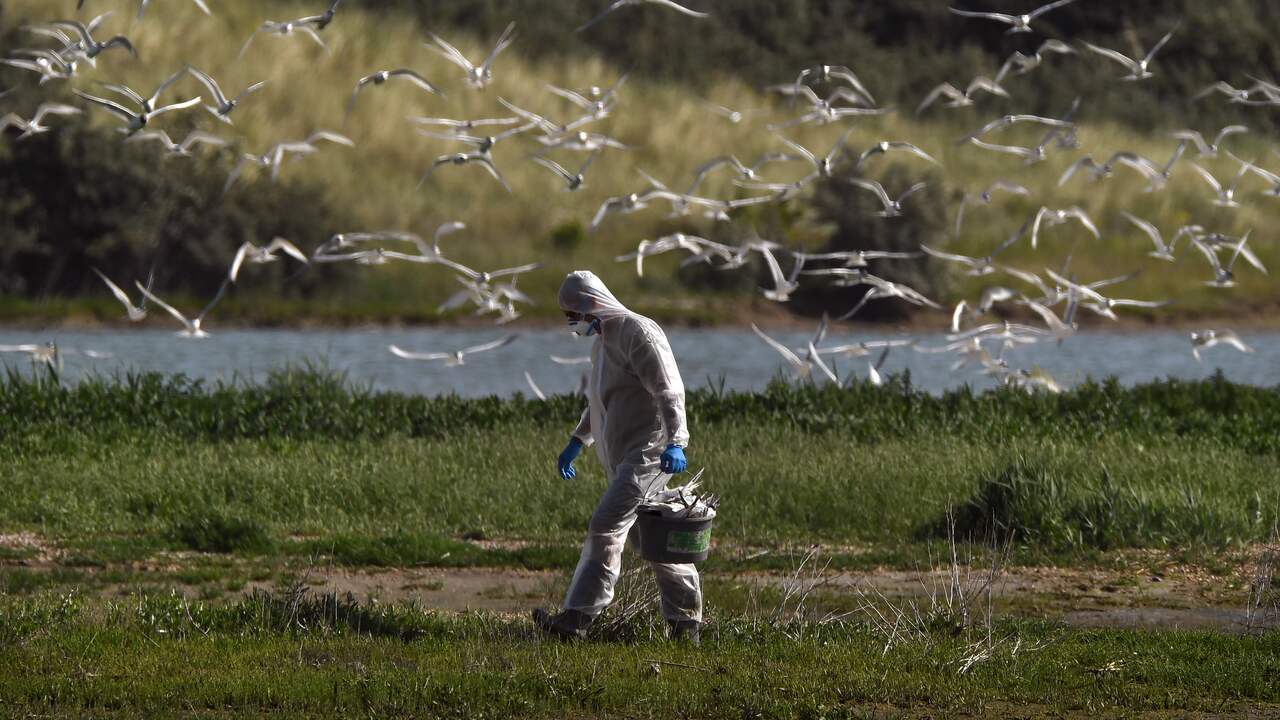Bird conservationists are very concerned about bird flu among wild birds in the Netherlands. Unlike other years, the virus continues to spread. This has already led to massive deaths in some bird species. What is going on?
Bird flu is not new in the Netherlands. Migratory birds such as geese, tufted ducks and wigeons carry the virus from Siberia to the Netherlands every autumn. Here they hibernate. In the spring the birds leave again and with that the bird flu normally disappears.
But this year something remarkable happened. The virus did not only strike among migratory birds, also birds that are naturally always here became infected. That hadn’t happened before. It is not clear why this is, but it is probably a coincidence. “In any case, the virus has not changed,” says a spokesperson for Wageningen University & Research (WUR).
Especially wild birds that live around the water are susceptible to bird flu. This is partly because the virus can survive for a long time in water. Geese, swans, ducks and gulls and many other water, wading and beach birds are the victims.
Thousands of sandwich terns died of bird flu on the Dutch coast in June.
Thousands of sandwich terns died of bird flu on the Dutch coast in June. Photo: Marc Plomp Bird Information Center Texel
–
–
–
Colony of Sandwich Terns completely wiped out
As the bird flu continued to circulate, the virus also affected birds during the breeding season, which roughly runs from March 15 to July 15. Entire colonies come together during breeding. As soon as the virus shows up, things go very fast: large groups of birds die in a short time.
This happened in June with sandwich terns. A colony of about 3,300 breeding pairs on Texel was completely wiped out, according to Natuurmonumenten. As a result, the terns have produced almost no young this year. Thousands of dead birds were also found on beaches in Zeeuws-Vlaanderen.
According to Vogelbescherming Nederland and Sovon Vogelonderzoek Nederland, the massive mortality among the sandwich terns is a huge blow to the population. At least a quarter of the birds did not survive.
The organizations compare the current situation with a mass death of sandwich terns in the 1960s. It then took twenty years for the population to return to its former level. “This outbreak will take us 50 years back in time,” said a Sovon spokesperson.
Wild birds also infect our chickens
- Bird flu is also very deadly for poultry. Chickens, turkeys and ducks become infected through contact with (the droppings of) wild birds. As a result, poultry that runs outside are especially vulnerable.
- Farms where bird flu is present are being culled. In that case, a confinement obligation and a ban on the transport of poultry and eggs will be imposed in the area.
- In addition, there are still national measures related to bird flu. For example, it is forbidden to visit companies with so-called risk birds, unless absolutely necessary.
–
–
–
A duck is tested for bird flu.

A duck is tested for bird flu. Photo: ANP
–
–
–
Also gulls, waders and sea eagles hit
In addition to the sandwich terns, many gulls, waders and swans died from bird flu. Dozens of dead birds washed up on the beaches of Walcheren this week.
Fifteen storks also died in one place recently, says a spokesperson for the Bird Protection. The organization is also concerned about the mortality among peregrine falcons and sea eagles. There are not many of these birds of prey in the Netherlands, which makes them extra vulnerable.
According to the Vogelbescherming, there is very little that can be done against bird flu. All people can do is clean up dead birds as soon as possible. This reduces the chance that other birds will become infected. Furthermore, the hope is that the birds that are immune will be able to grow the population again.
Migratory birds such as barnacle geese take bird flu from Siberia to the Netherlands in the autumn.

Migratory birds such as barnacle geese take bird flu from Siberia to the Netherlands in the autumn. Photo: Getty Images
–
–
–
Fear of black-tailed godwits and shelducks
We do not know how the virus will behave in the near future. For now, bird conservationists are extra alert to mortality among a new group of migratory birds that comes to the Wadden area in July and August. These include black-tailed godwits, waders and sandpipers, which often sit closely together.
In addition, waterfowl such as shelducks are now moulting (which is a period in which they replace their old feathers with new ones). During that process, the animals again flock to each other. This also means that they are extra vulnerable to an outbreak of bird flu.
The new migration season starts in September and October. Large groups of geese and widgeons come to our country from Siberia. It is not yet clear what consequences this will have for bird flu. A special team with experts from the Vogelbescherming, SOVON and WUR, among others, keeps its finger on the pulse.
Can people get infected?
- People can get bird flu, but the chance is very small. If someone does become infected, the symptoms are usually very mild.
- It is important to prevent contamination of humans. The virus could adapt, allowing it to spread among people.
- Therefore, people should wear protective suits and gloves when in contact with sick and dead birds.
–
–
–
–


